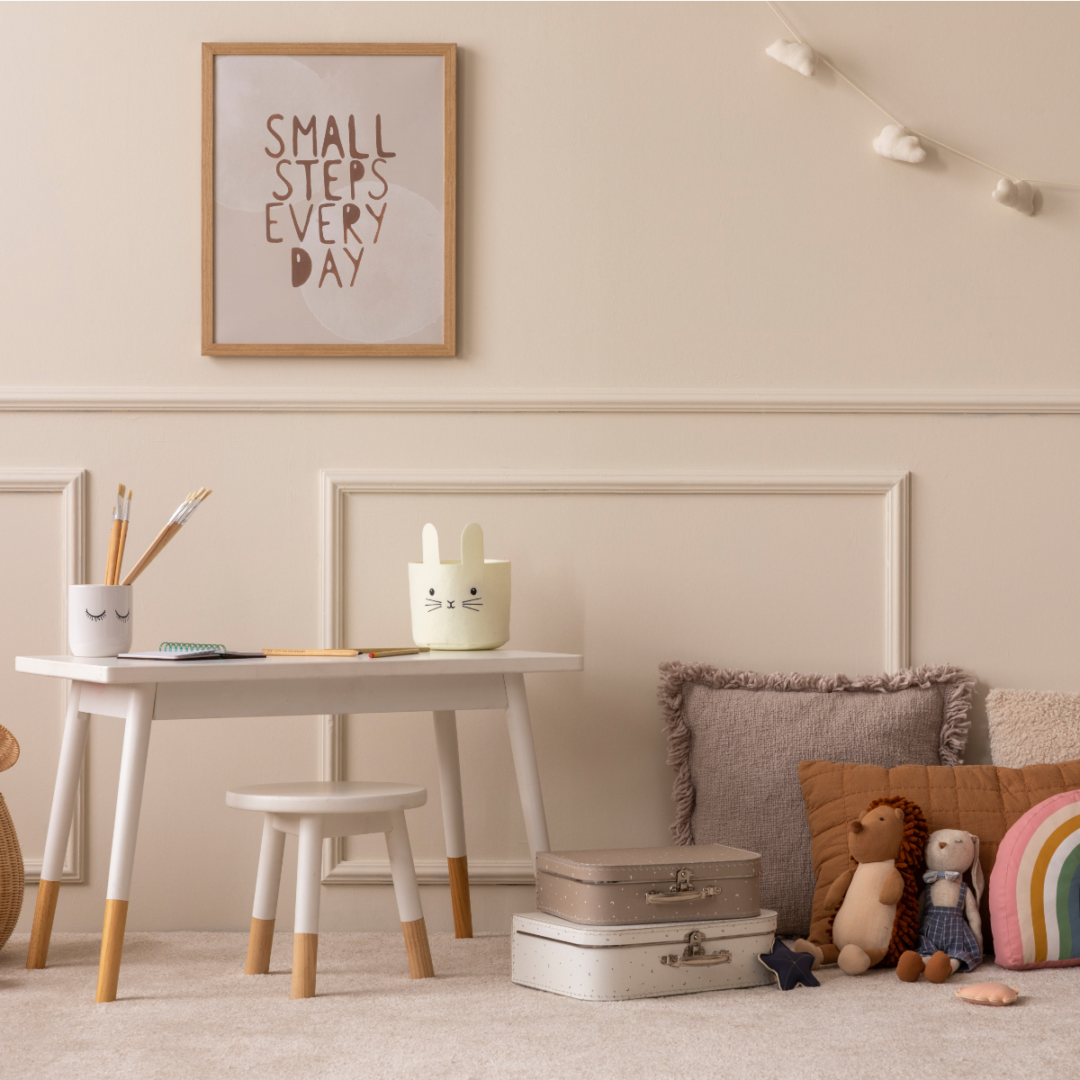
The beige nursery phenomenon
When influencers show their sons’ and daughters’ rooms, the color leaves the video: Furniture, clothes, toys – all in pastel colors. Observation from a world in which parents’ taste is what counts most.
Contribution by Katharina Pfannkuch
“Major social issues are always reflected in the color styles of eras,” says Axel Buether, head of the Institute for Color Psychology at the University of Wuppertal. The many cloudy colors are an expression of the desire for a healthy world that finds ecological and healthy ways of using resources and in which sustainability and authenticity are considered valuable.
The calming effect of warm and matt colors is intentional in the face of ever new crises. And because reassurance can do no harm, especially with small children, some parents are obviously only too happy to surround their children with the neutral-matt color palette.
…
“If children have no experience with colors, their senses atrophy,” says Axel Buether. Children see bright, varied colors as an invitation. A colorful ball pool, for example, immediately signals to them that they are welcome and allowed to play: “If a room is painted in bright colors, it encourages children to move and be more active.”
Different colors, says Buether, prepare people for future environmental events, they create an expectation in our bodies – both mentally and physically. “You can make children recognize connections between smell, taste, feel, functions and colors. When they play with colored building blocks or Lego bricks, they learn to assign colors to individual functions. Mixing new shades from a few basic colors while painting is also an authentic experience that introduces children to the richness of the color world. ” This trains a sensitivity that later leads to better observation skills.
…
Read the entire article – Link to Spiegel online


